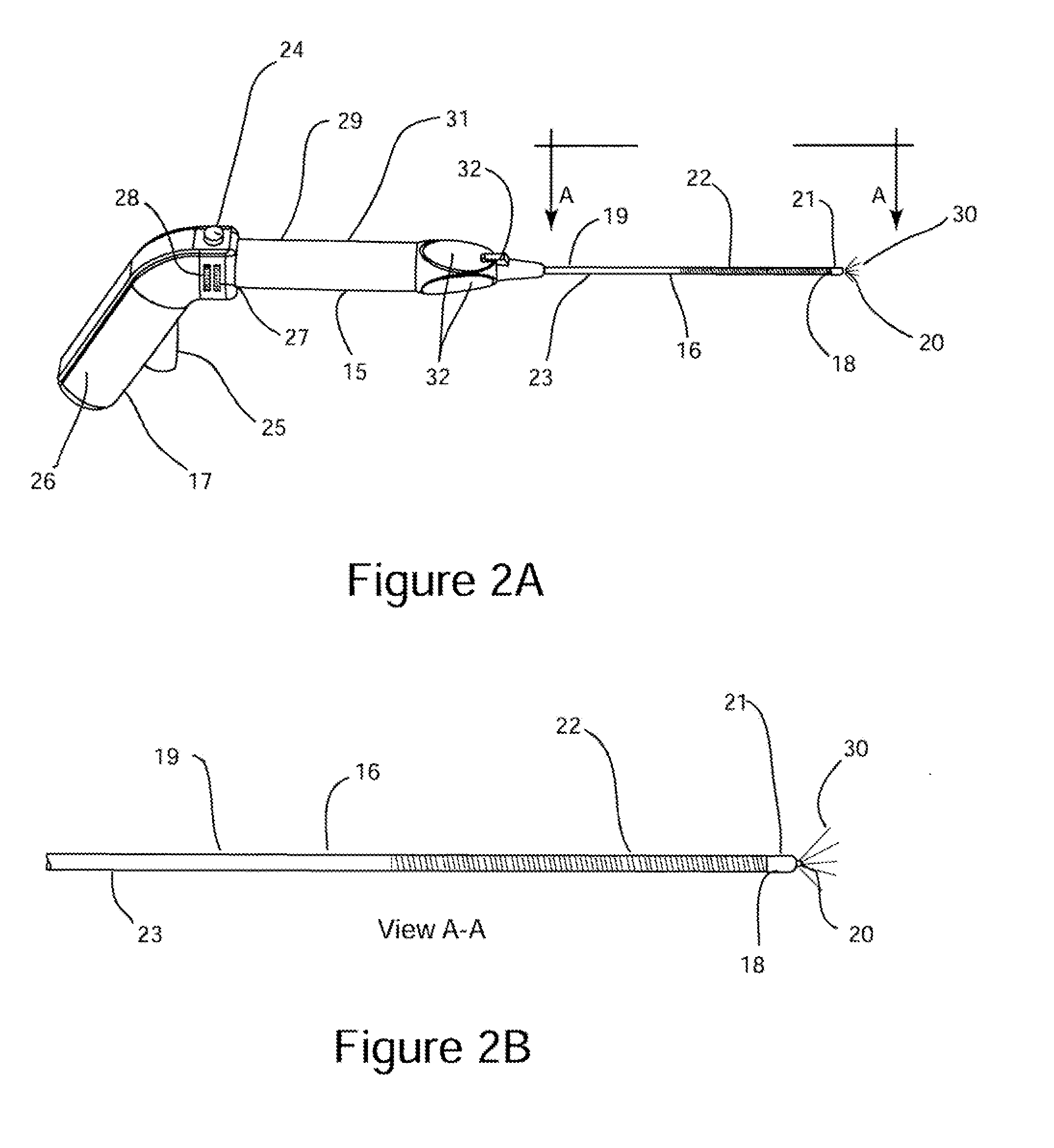Apparatus and method for treating rhinitis
- Summary
- Abstract
- Description
- Claims
- Application Information
AI Technical Summary
Benefits of technology
Problems solved by technology
Method used
Image
Examples
Embodiment Construction
[0049]FIG. 1 depicts an internal view of the nasal cavity showing the nasal anatomy relevant to this invention. Shown for orientation is the lateral nasal wall 14, the nose 1, nostril 2, upper lip 3, sphenopalatine foramen 4, superior nasal turbinate 5, middle nasal turbinate 6, inferior nasal turbinate 7, postnasal nerve 8, greater palatine nerve 9, posterior nerve inferior lateral branch 10, posterior nerve middle lateral branch 11, posterior nerve superior inferior nasal branch 12, and cul de sac 13 defined by the tail of the middle nasal turbinate 6, lateral wall 14, and the inferior turbinate 7. Posterior nasal nerve 8 is within a sheath comprising the sphenopalatine artery and vein, not shown. Posterior nasal nerve branches 10, 11, and 12 are co-sheathed with the corresponding branches of the sphenopalatine artery and vein. Posterior nasal. nerve 8 rises through the sphenopalatine foramen 4 along with the sphenopalatine artery and vein and remain, along with its branches 10, 1...
PUM
 Login to View More
Login to View More Abstract
Description
Claims
Application Information
 Login to View More
Login to View More - R&D
- Intellectual Property
- Life Sciences
- Materials
- Tech Scout
- Unparalleled Data Quality
- Higher Quality Content
- 60% Fewer Hallucinations
Browse by: Latest US Patents, China's latest patents, Technical Efficacy Thesaurus, Application Domain, Technology Topic, Popular Technical Reports.
© 2025 PatSnap. All rights reserved.Legal|Privacy policy|Modern Slavery Act Transparency Statement|Sitemap|About US| Contact US: help@patsnap.com



